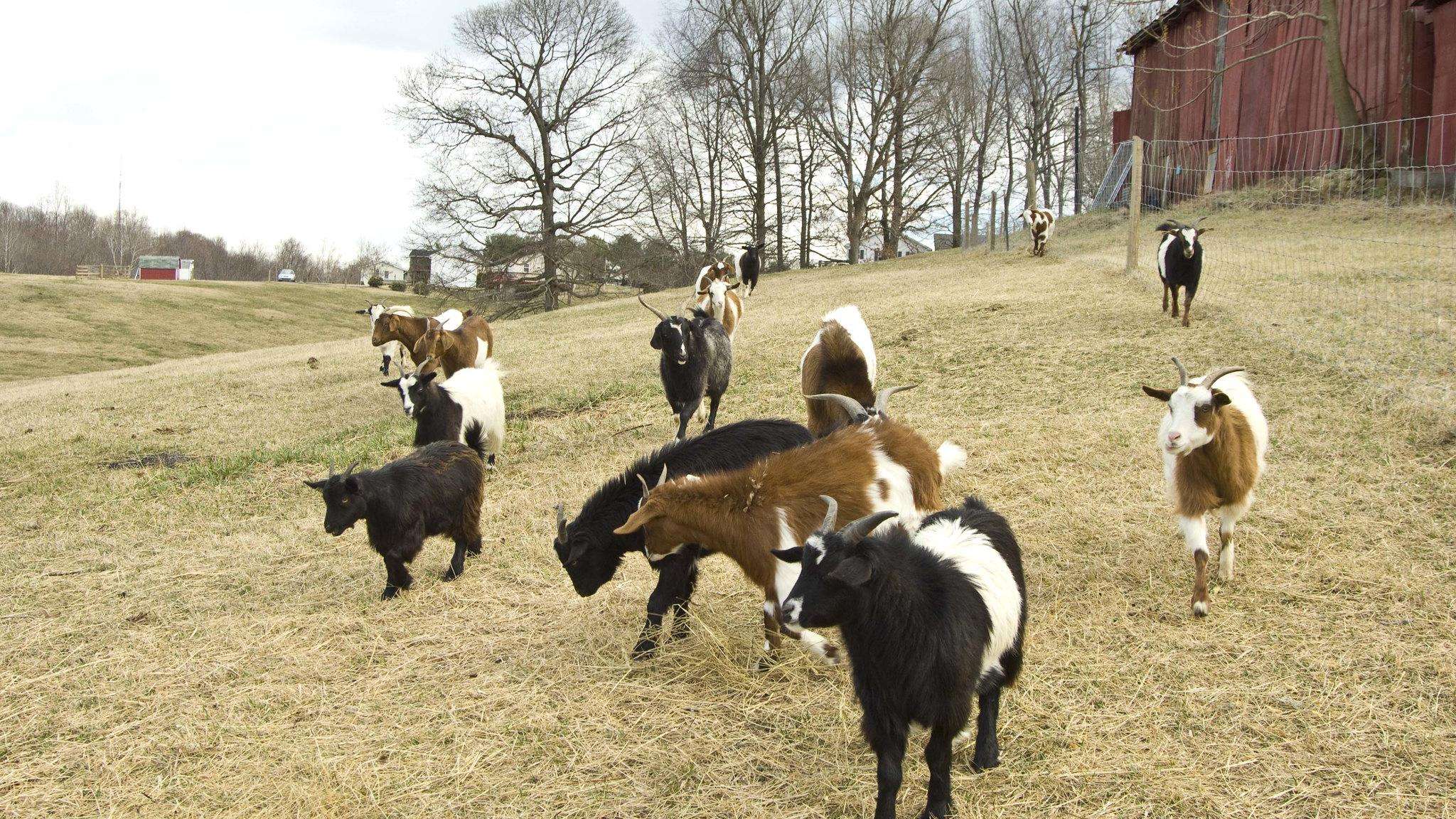Mycoplasma Ovipneumoniae

Mycoplasma ovipneumoniae (M. ovi) is a bacterium found in the nasal cavity and sinuses of domestic and wild sheep and goats. It was first detected in the United States in 1972 and may cause pneumonia in some affected animals.
M. ovi is spread by direct contact with respiratory droplets or secretions, such as when animals exhale, cough, and sneeze.
Some infected animals may appear clinically healthy while others may experience a range of illness from mild respiratory disease to severe pneumonia and death.
In domestic sheep and goats:
- Lethargy
- Fever
- Decreased appetite
- Coughing, nasal discharge
- Decreased milk production in ewes
In wild sheep and goats:
- Coughing
- Nasal discharge
- Ear paresis
- Headshaking
- Fever, lethargy
- Sudden death
Biosecurity measures and management practices can be used to reduce transmission of M. ovi. Here's what you can do to reduce the spread:
- Avoid overcrowding.
- Ensure adequate ventilation when animals are kept indoors.
- Use management strategies that reduce risk factors for respiratory illness. This can include:
- Having a sick pen to separate animals with respiratory signs
- Having a quarantine pen for animals that are new to the property or have just returned from a show or event
- Practicing good biosecurity on your farm
Currently there are no identified treatments for M. ovi. Antibiotic treatment may help temporarily, but response may vary, and the bacteria may regrow. If animals show signs of pneumonia, a broad-spectrum antibiotic and supportive care to ensure animals are eating and drinking may help.
Report Signs of Animal Disease
Producers or owners who suspect an animal disease should contact their veterinarian to evaluate the animal or herd. Find an accredited veterinarian.
Animal health professionals (veterinarians; diagnostic laboratories; public health, zoo, or wildlife personnel; and others) report diagnosed or suspected cases of nationally listed reportable animal diseases to APHIS District Offices and to the State animal health official as applicable under State reporting regulations.
Controlling Mycoplasma Ovipneumoniae
There are a variety of diagnostic tests for M. ovi identification, but there is no official standard test. Currently available tests have demonstrated some variability between laboratories and do not meet requirements as outlined in the World Organisation for Animal Health Manual for Diagnostic Tests and Vaccines for Terrestrial Animals.
These are available tests your local veterinarian might suggest:
- Antibody-based tests such as indirect hemagglutination (IH) and competitive enzyme-linked immunosorbent assay (cELISA)
- DNA-based tests like polymerase chain reaction (PCR)
There is no antemortem diagnostic test for M. ovi.
Domestic Sheep
- A 2011 APHIS National Animal Health Monitoring System (NAHMS) study detected M. ovipneumoniae by PCR test in one or more domestic sheep on 88.5 percent (401 out of 453) of sheep premises and 29.4 percent (1,199 out of 4,073) of individual sheep tested.
- An unpublished study in Alaska detected M. ovipneumoniae in 57 percent (4 out of 7) of Alaskan domestic sheep premises and 7.6 percent (13 out of 171) of domestic sheep.
Domestic Goats
- Studies on the prevalence of M. ovipneumoniae in domestic goats differ.
- An unpublished study in Alaska detected M. ovipneumoniae in 4 out of 32 domestic goat premises (12 percent) and in 12 out of 485 domestic goats (2.5 percent).
- A Washington State study sampled 84 goats from 16 premises and detected M. ovipneumoniae in 7 out of 16 (44 percent) premises (individual animal results not reported).
- An unpublished study on pack goat premises in 12 States found M. ovipneumoniae in 14 out of 83 premises (17 percent) and 46 out of 571 of all goats sampled (8 percent).
- The study found a significantly higher prevalence of the bacterium in goats less than 1 year of age.
- An ongoing NAHMS national study will report M. ovipneumoniae prevalence in U.S. domestic goats.

